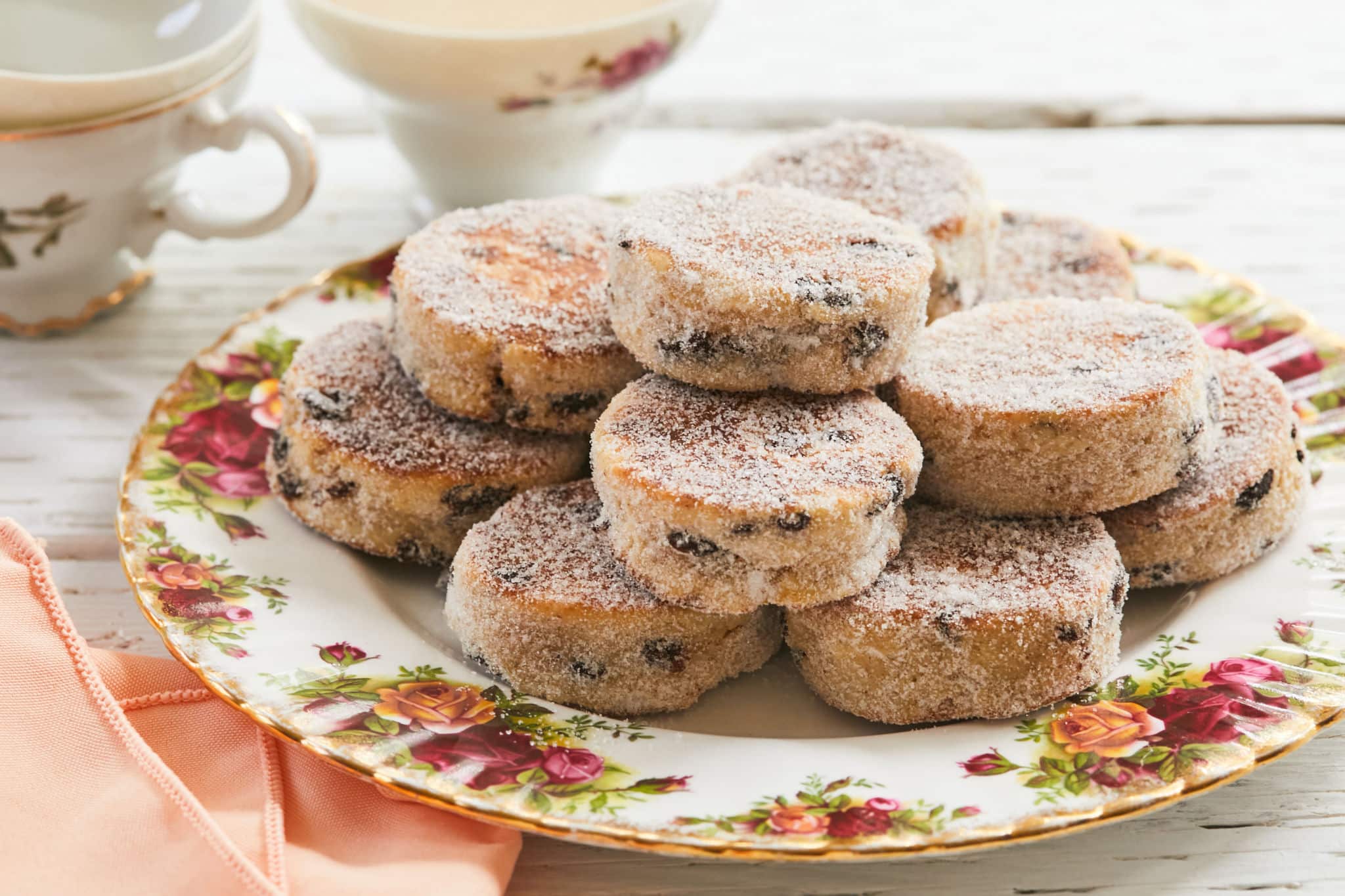
This post may contain affiliate links. Please see my full disclosure for details.
Hi Bold Bakers!
Just check out these pics! And I mean both the pictures and the pics—because you can also call Welsh Cakes pics, or bakestones, or just delicious with a cup of tea.
My homemade Welsh cakes are so tender and buttery they practically melt in your mouth. They’re almost scone-like in texture, but their flavor comes alive thanks to warm nutmeg and cinnamon and sweet currants. They’re dipped in sugar at the end, which gives the cakes a perfect sweetness and an irresistible texture.
You heat these on your stovetop in a castiron skillet or non-stick pan, so there’s no need to heat up your kitchen with your oven! It’s a fantastic recipe for a quiet, warm afternoon.
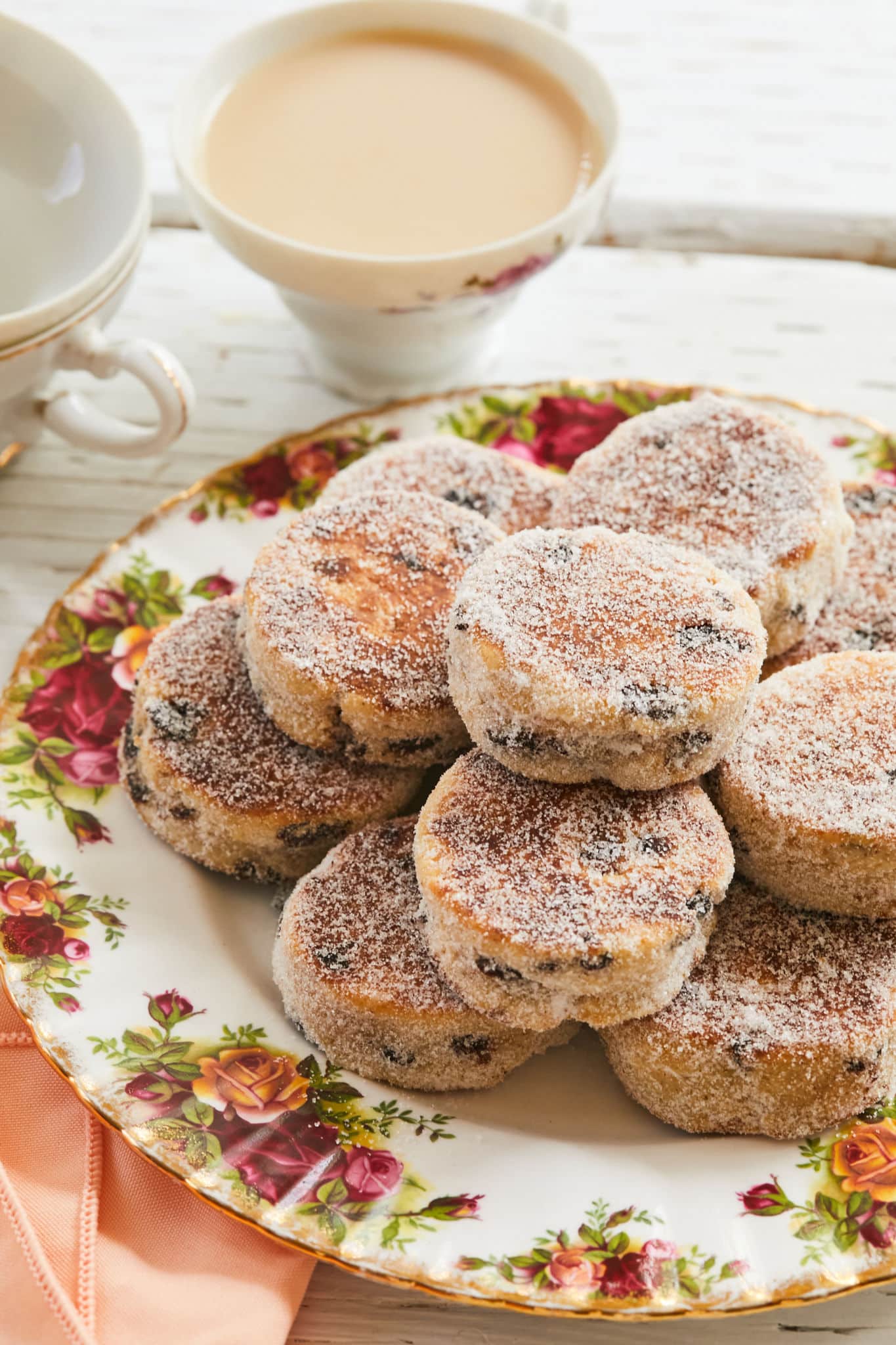
What Are Welsh Cakes?
Welsh cakes are a traditional tea-time cake from Wales that became popular in the late 1800s. They’re made with simple ingredients, like fat, sugar, and dried fruit, and then baked on a griddle. They are somewhat similar to a scone but look like a thick cookie, and are lovely cakes that never taste too sweet.
What You Need To Make Welsh Cakes
- Measuring Cups and Spoons
- Mixing bowls
- Castiron skillet or non-stick pan with lid
- 2-inch (5cm) round biscuit cutter
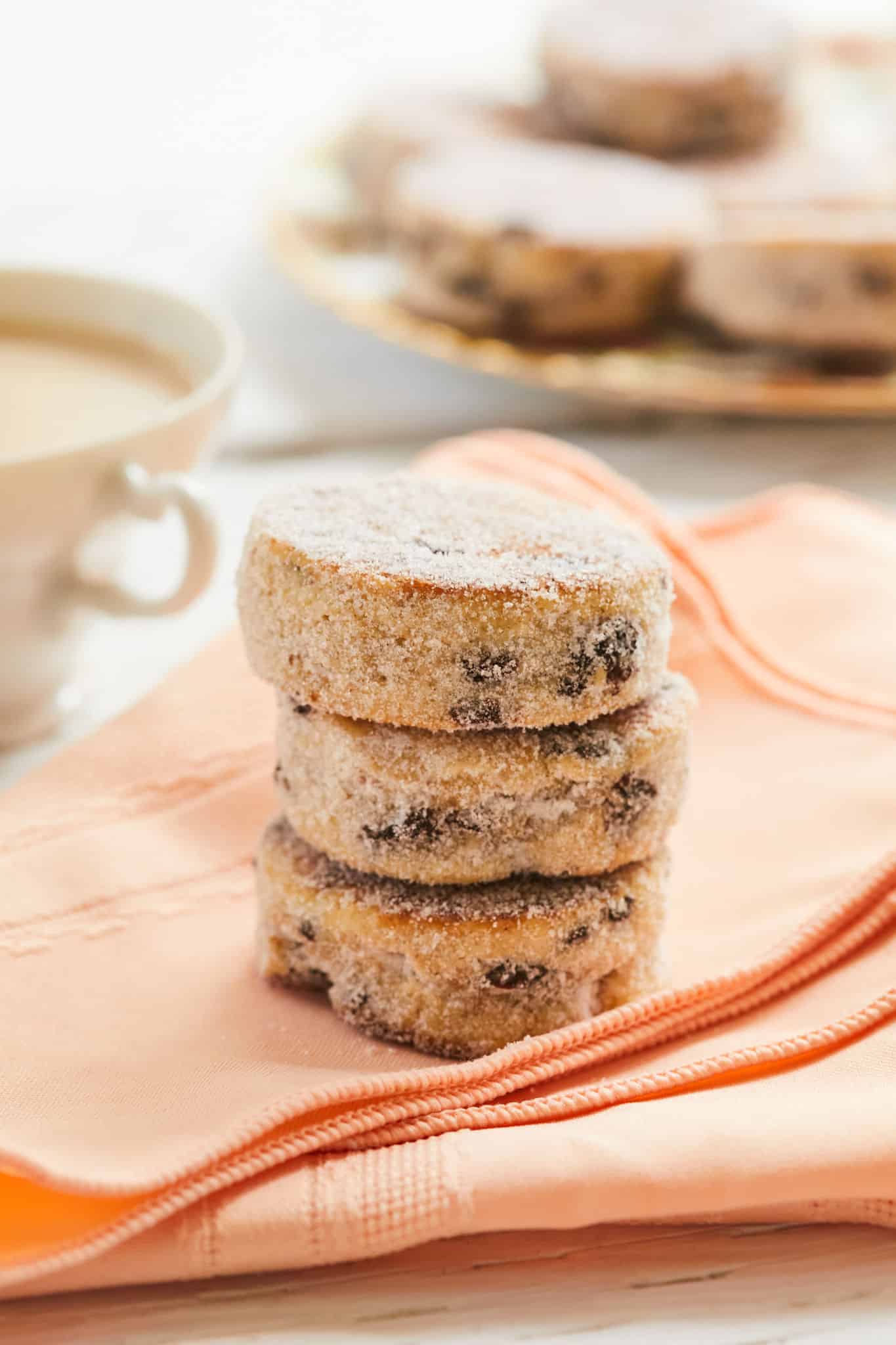
How To Make Welsh Cakes
Making this traditional cake from Wales is incredibly easy and so satisfying. Here is how you make Welsh cakes (you can get the full printable recipe with measurements down below):
- Combine the flour 1/3 cup (2½oz/71g) sugar, baking powder, nutmeg, cinnamon, and salt in a large mixing bowl. Cut ½ cup (4oz/115g) butter into that mixture until it begins to look like coarse crumbs. Then, add in the currants.
- Pour the beaten egg and 2 tablespoons of milk into the mixture and knead until a dough has formed. If the dough is too dry and crumbly, knead in the remaining tablespoon of milk.
- Wrap the dough well and chill in the refrigerator until it is firm. This will take around 30 minutes.
- When you are ready to cook, heat your castiron skillet or non-stick pan over low heat. Melt the remaining butter in a small bowl and place it near your stove. Pour the remaining amount of sugar on a plate and also place it nearby.
- Roll the chilled dough to a 1/2-inch (12mm) thickness on a floured surface and use a 2-inch (5cm) round biscuit cutter to cut 12 rounds of dough. Gather and reroll the scraps as needed.
- Brush your skillet with some of the melted butter and place six cakes on. Refrigerate the other six while these are baking.
- Place a lid on the skillet and cook the cakes until they are golden brown. Flip and cook the other side.
- Once the cakes are golden and firm, brush both sides with some melted butter and dip all sides into the plate of sugar to coat. Allow the cakes to cool on a wire rack while you cook the remaining cakes.
Gemma’s Pro Chef Tips For Making Welsh Cakes
- When you are making the dough, use as little liquid as possible. For the most tender results, try not to over-knead the dough as well.
- If you don’t have dried currants, use raisins or any other dried fruit you have on hand. If the fruit is large, give it a good chop.
- When you are rolling the cakes, don’t roll them thicker than 1/2-inch. Otherwise, the outside my brown before the inside has time to cook.
- When you are cooking the cakes, keep the heat low to prevent burning. Use a lid to help the centers cook.
- Don’t skip the dipping of sugar in the end—it adds a lovely texture and, since there is very little sugar in the dough itself, it doesn’t make the cake too sweet.
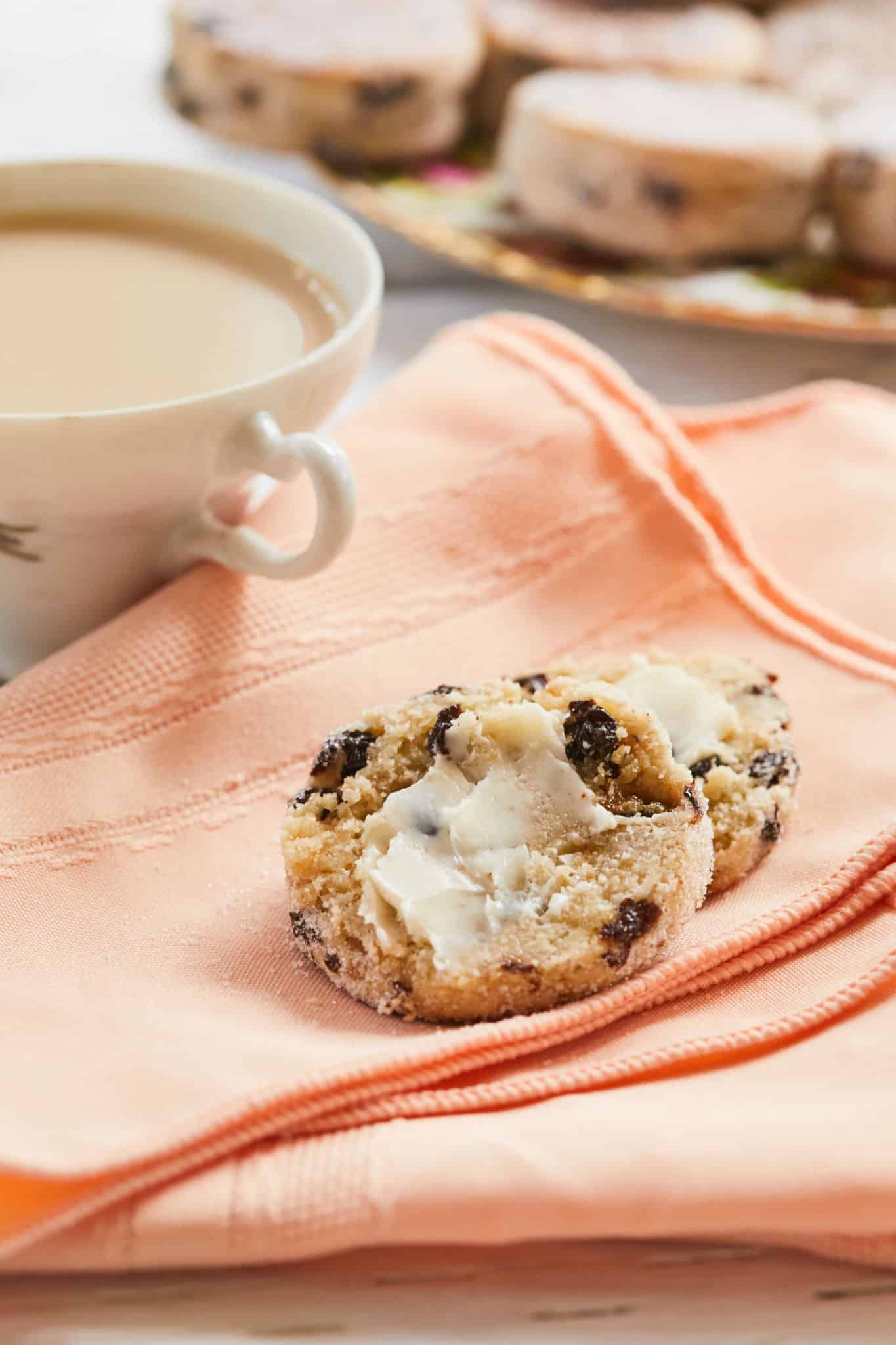
How Do I Store Welsh Cakes?
You can store any leftover Welsh cakes in an airtight container at room temperature for up to 3 days.
Make More Tea-Time Sweets!
And don’t forget to buy my Bigger Bolder Baking Cookbook!
Full (and printable) recipe below!
Homemade Welsh Cakes Recipe
Ingredients
- 2 cups (10oz/284g) all-purpose flour
- ⅓ cup (2½oz/71g) plus ½ cup (4oz/115g) granulated sugar, divided
- 1 teaspoon baking powder
- ½ teaspoon ground nutmeg
- ¼ teaspoon ground cinnamon
- ¼ teaspoon salt
- ½ cup (4oz/115g) plus ¼ cup (2oz/57g) butter, cold, diced and divided
- ½ cup (2½oz/71g) dried currants
- 1 large egg (beaten)
- 2-3 tablespoons whole milk
Instructions
- In a large mixing bowl, combine the flour, 1/3 cup (2½oz/71g) sugar, baking powder, nutmeg, cinnamon, and salt. Cut ½ cup (4oz/115g) butter into the flour mixture until the mixture resembles coarse crumbs, then toss in the currants.
- Pour in the beaten egg and 2 tablespoons of milk and knead together to form a dough. If the dough is very dry and crumbly, knead in the remaining tablespoon of milk.
- Wrap the dough well and chill until firm, about 30 minutes.
- When ready to cook, heat a cast-iron skillet or non-stick pan over low heat. Melt the remaining ¼ cup (2oz/57g) of butter in a small bowl and place it near the stove. Pour the remaining ½ cup (4oz/115g) of sugar on a plate and also place it near the stove.
- Roll the dough to a 1/2-inch (12mm) thick on a floured surface and, using a 2-inch (5cm) round biscuit cutter, cut 12 rounds of dough (you can gather and reroll the scraps as needed).
- Brush the skillet with some of the melted butter and place six cakes on the skillet (refrigerate the remaining rounds).
- Place a lid on the skillet and cook the cakes until they are golden brown, Flip and cook the other sides.
- When the cakes are golden and firm, they are done. Brush both sides of the cakes with some melted butter and dip all sides into the plate of sugar to coat. Let cool on a wire rack while you cook the remaining cakes.
- Serve warm or room temperature. Store in an airtight container at room temperature for up to 3 days.
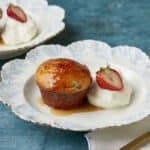

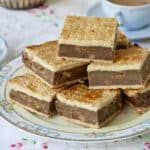
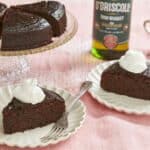
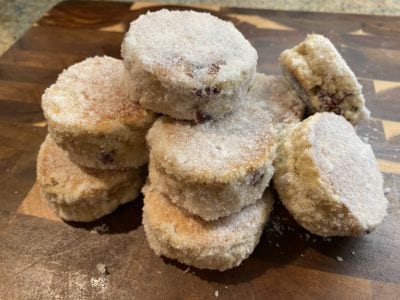
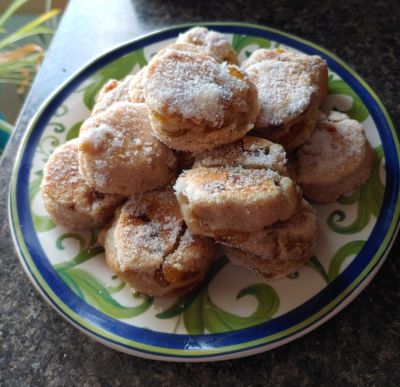
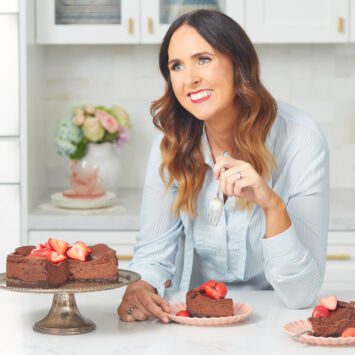

I’m Welsh we always had a biscuit tin full of Welsh cakes my Mam cooked batches of them twice a week same way but left out spices ,I’m going back 75yrs years 🏴🏴
Delicious! I used dried cranberries and sugar in the raw.
How long do you cook the cakes before turning them over? Your instructions don’t mention the time.
This was super delicious added some orange extract to the dough as well.
They are so thick! Since my great grandpa was a Jones we had a recipe floating around from a cousin I think. Her original recipe was made with lard but I don’t like mine made with lard, I tried it once. I ended up making mine with Crisco instead and it made a heck of a lot more than your recipe. I should try making it with butter next time. I roll my dough out between two pieces of wood on a real pastry cloth so they are all the same thickness.
I made these tonight as my oven is not working. Big hit with the family!
Can you use fresh blueberries place of the currants
Gemma,
I wanted to make these the moment I saw your post. I used dried cranberries and they are DELICIOUS! Thank you 🙂
Instead of cutting them in 2″ rounds, what do you think about rolling (or patting) into circle and cutting in wedges…still keeping them 1/2″ thick?
Can you please share if you use salted butter in this recipe or unsalted? My guess is salted since that is what you mostly use. Thanks! I love your recipes!